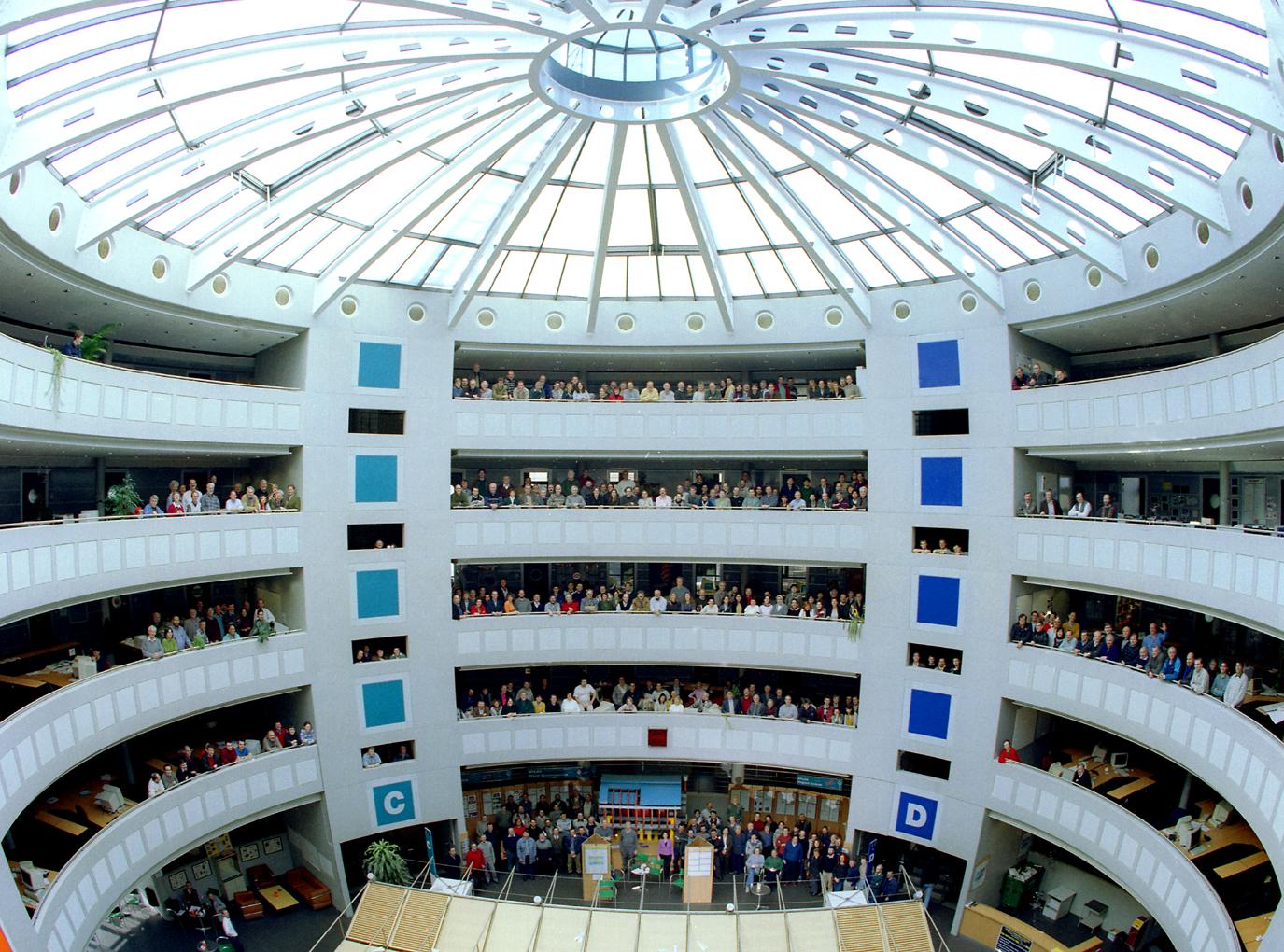Open Access to the LHC takes on a new meaning
Complete scientific documentation on the LHC machine and detectors is now freely available on the Web.
The ATLAS collaboration, shown here, contributed to the 1,600-page scientific documentation of the LHC, along with staff from the other five detectors and the LHC machine.
Now that the LHC tunnel and the experimental caverns are shut down for public visits, "Open Access to the LHC" has taken on an entirely new meaning. Last Thursday, 14 August, seven major articles were published electronically in a special issue of the Journal of Instrumentation (JINST). Together they form the complete scientific documentation on the design and construction of the LHC machine and the six detectors (ALICE, ATLAS, CMS, LHCb, LHCf and TOTEM), and thus on the entire LHC project, well before start-up on 10 September.
For many years to come, these papers will serve as key references for the stream of scientific results that will begin to emerge from the LHC after the first collisions that are expected later this year. Although published in a refereed scientific journal, the articles will be completely free to download and to read on the Internet under an "Open Access" scheme, without requiring a journal subscription.
"This is a landmark publication in many respects," says ATLAS physicist Rüdiger Voss, who has coordinated the project since it started in late 2005. "It is probably the first time in the history of particle physics that a major new accelerator project has been documented in such a comprehensive, coherent, and up-to-date manner before it goes into operation. It is a much-needed update of the Technical Design Reports, some of which are now more than 10 years old."
With 1600 pages authored by 8000 scientists and engineers, the publication boasts a couple of superlatives not seen in science before. It is the most significant materialization of CERN’s new Open Access policy thus far, and an important milestone on the road to converting all particle physics literature to Open Access under the SCOAP3 initiative (http://www.scoap3.org). "This project has been marked all along the way by an excellent spirit of collaboration between the LHC machine and experiments that bodes well for future, common initiatives. We have also appreciated the excellent collaboration with JINST," says Rüdiger Voss.
JINST is an online-only journal published jointly by the International School for Advanced Studies (SISSA) in Trieste, Italy, and the Institute of Physics Publishing in Bristol, UK, under the scientific direction of eminent detector physicist Amos Breskin from the Weizmann Institute of Science in Rehovot, Israel. Although started only in 2006, it has quickly become popular in the LHC community as a platform for publishing detector and other technical papers. "We were all impressed by the quality of the scientific peer review provided by JINST", says Rüdiger Voss. "Given the size and complexity of these papers, and the short deadlines that we had to impose to see these papers published before LHC start-up, this has been a major achievement."
The special LHC issue of JINST, entitled "The CERN Large Hadron Collider: Accelerator and Experiments" can be found on the Web at:
http://www.iop.org/EJ/journal/-page=extra.lhc/jinst
Although this project has focused on the online edition, a printed book with the same title, collecting all seven articles together, is also in the works and will become available later this year.


